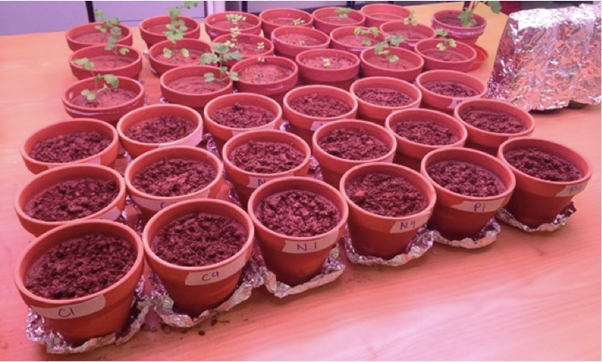Centre for Water, Environment, Sustainability & Public Health
Soil contamination, restoration & remediation
Contaminated land
(Franken-soil) Contaminated lands cost society and economy £billions, but capturing the economic value of these sites in an economically and environmentally sustainable manner is elusive. Contamination and aggressive remediation strategies often leave barren landscapes, devoid of aesthetic and economic value.
An understanding of terrestrial succession and the dynamics of plant-microbe interaction underpins any strategy to best optimise the recovery process. Knowing community dynamics during ecosystem recovery in previously harsh, or highly disturbed, environments is essential for effective long-term recovery.
Key people: Charles Knapp, Christine Switzer

Environmental microbiology
Environmental microbiology is an important aspect of environmental engineering. We use laboratory studies to quantify:
- how microbes interact and develop as a community
- pathogen mobility in the environment
- links between contamination and antimicrobial resistance in the environment
Our work translates ecology principles to an engineering setting.
Key people: Charles Knapp, Tara Beattie, Bob Kalin, Vernon Phoenix
Smouldering remediation
Smouldering remediation is a patented process capable of removing more than 99.9% of hazardous organic contaminants such as coal tars and heavy oils from soils and other waste materials.
This photograph was taken after a hardware test and shows how soil may appear after remediation.
Inset top right are photographs of before and after samples of the contaminated soil used in this test.
Smouldering remediation is marketed as STAR in partnership with SiREM.
Key people: Christine Switzer
Soil amendments

Soil amendments such as biochar provide valuable nutrients to plants and change the dynamics of contaminants that may be present in the soil. Biochar has significant potential as a remediation tool.
In this study of a soil impacted by PAH and potentially toxic element contaminants, biochar facilitates the growth of plants in otherwise harsh conditions.
This project was supported by an EU COST Action TD1107 award for Ms Aoife Brennan to work in collaboration with Dr Eduardo Moreno Jimenez at the Universidad Autónoma de Madrid.
Soils & sediments reuse
Waste may be viewed as potential raw materials in the wrong place. Scotland's Zero Waste Strategy will require industry and society to develop innovative solutions to recovering materials.
We’re currently working with Scottish Canals on a project to reduce, reuse, and recycle sediments dredged from canals while maintaining the navigational network for leisure and low-carbon transportation.
Key people: Richard Lord
Plastic resin pellets
Our students have helped us monitor the accumulation of pre-production plastic resin pellets on a beach in Fife. Plastic pellets pose a direct threat to wildlife through ingestion and accumulation within the digestive system as well as a mechanism for transporting a range of persistent organic pollutants in the marine environment.
Characterising the presence of pellets is a first step toward solving this global problem.
Key people: Christine Switzer
